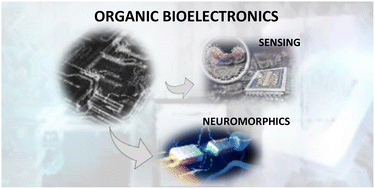Spiers Memorial Lecture: Challenges and prospects in organic photonics and electronics
Abstract
While a substantial amount of research activity has been conducted in fields related to organic photonics and electronics, including the development of devices such as organic field-effect transistors, organic photovoltaics, and organic light-emitting diodes for applications encompassing organic thermoelectrics, organic batteries, excitonic organic materials for photochemical and optoelectronic applications, and organic thermoelectrics, this perspective review will primarily concentrate on the emerging and rapidly expanding domain of organic bioelectronics and neuromorphics. Here we present the most recent research findings on organic transistors capable of sensing biological biomarkers down at the single-molecule level (i.e., oncoproteins, genomes, etc.) for the early diagnosis of pathological states and to mimic biological synapses, paving the way to neuromorphic applications that surpass the limitations of the traditional von Neumann computing architecture. Both organic bioelectronics and neuromorphics exhibit several challenges but will revolutionize human life, considering the development of artificial synapses to counteract neurodegenerative disorders and the development of ultrasensitive biosensors for the early diagnosis of cancer to prevent its development. Moreover, organic bioelectronics for sensing applications have also triggered the development of several wearable, flexible and stretchable biodevices for continuous biomarker monitoring.

- This article is part of the themed collections: The Spiers Memorial Lectures and Challenges and prospects in organic photonics and electronics


 Please wait while we load your content...
Please wait while we load your content...